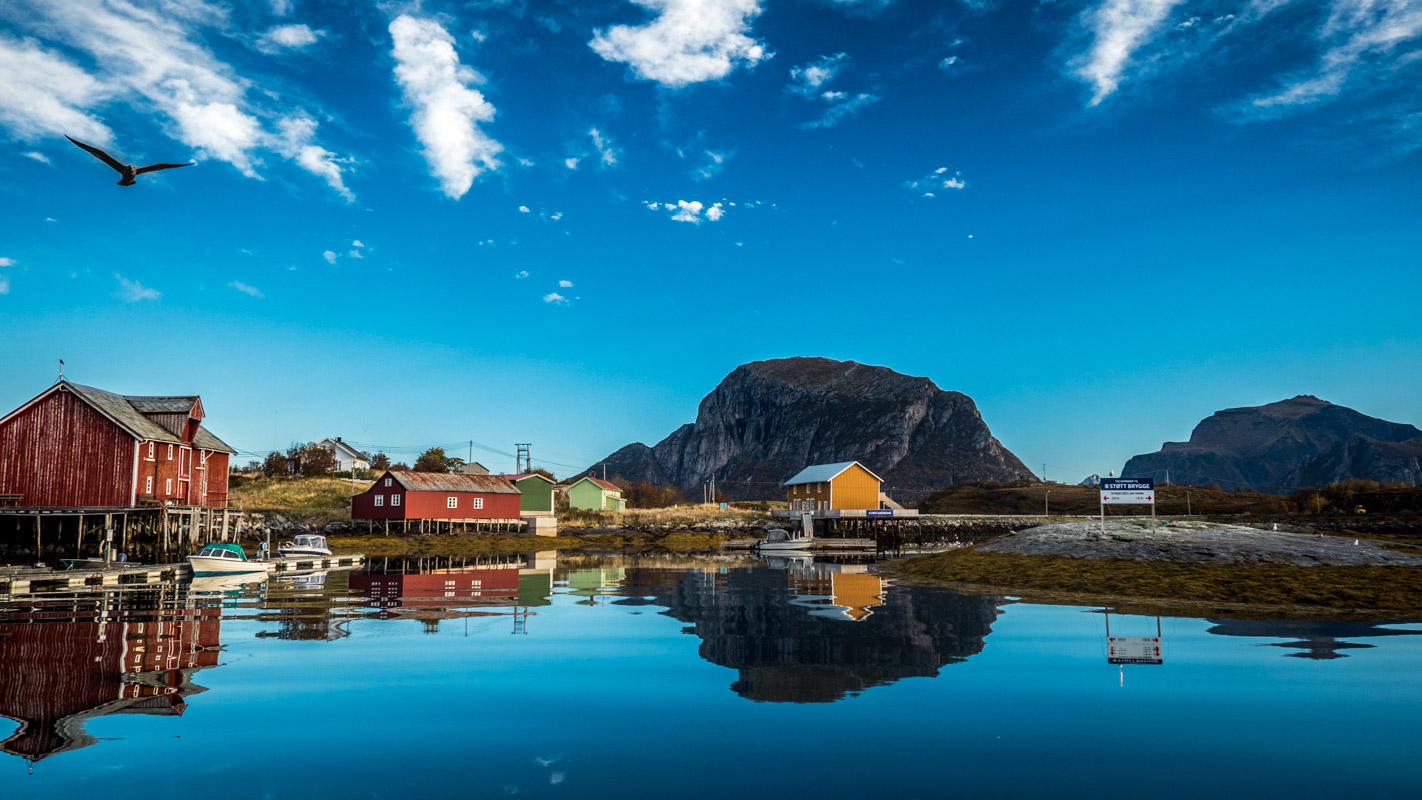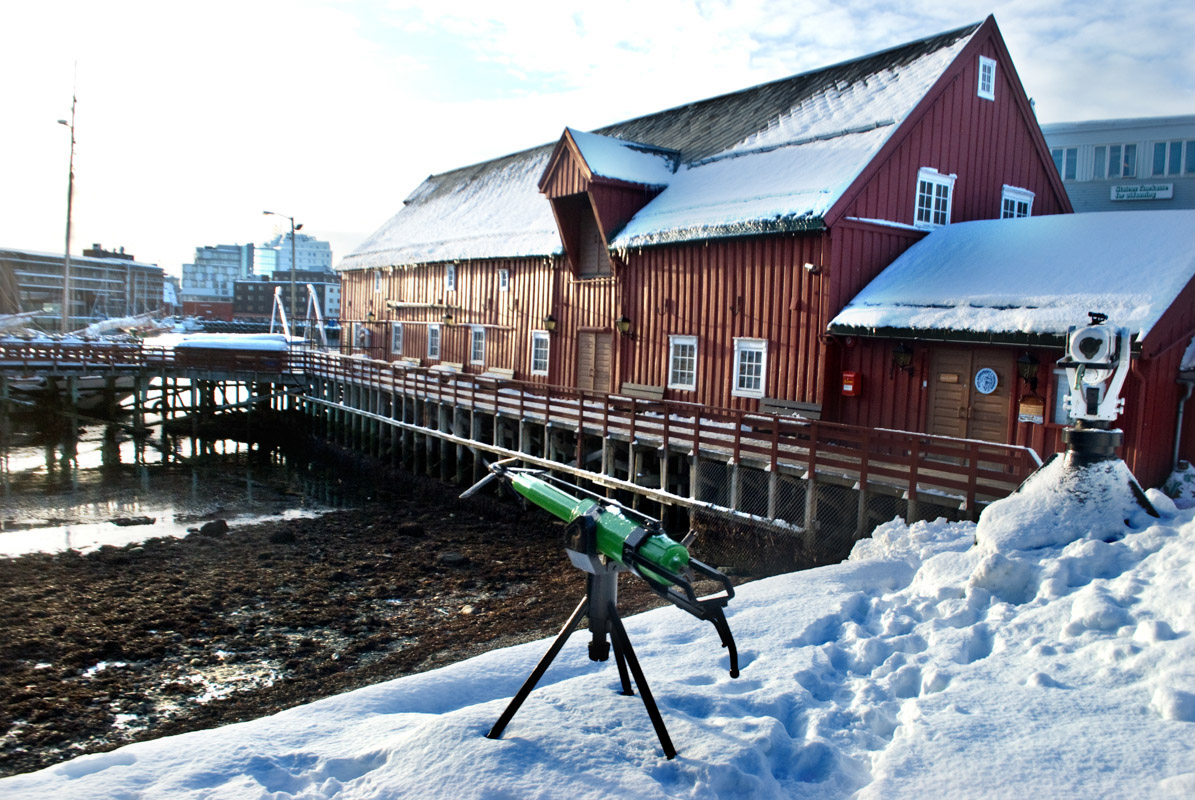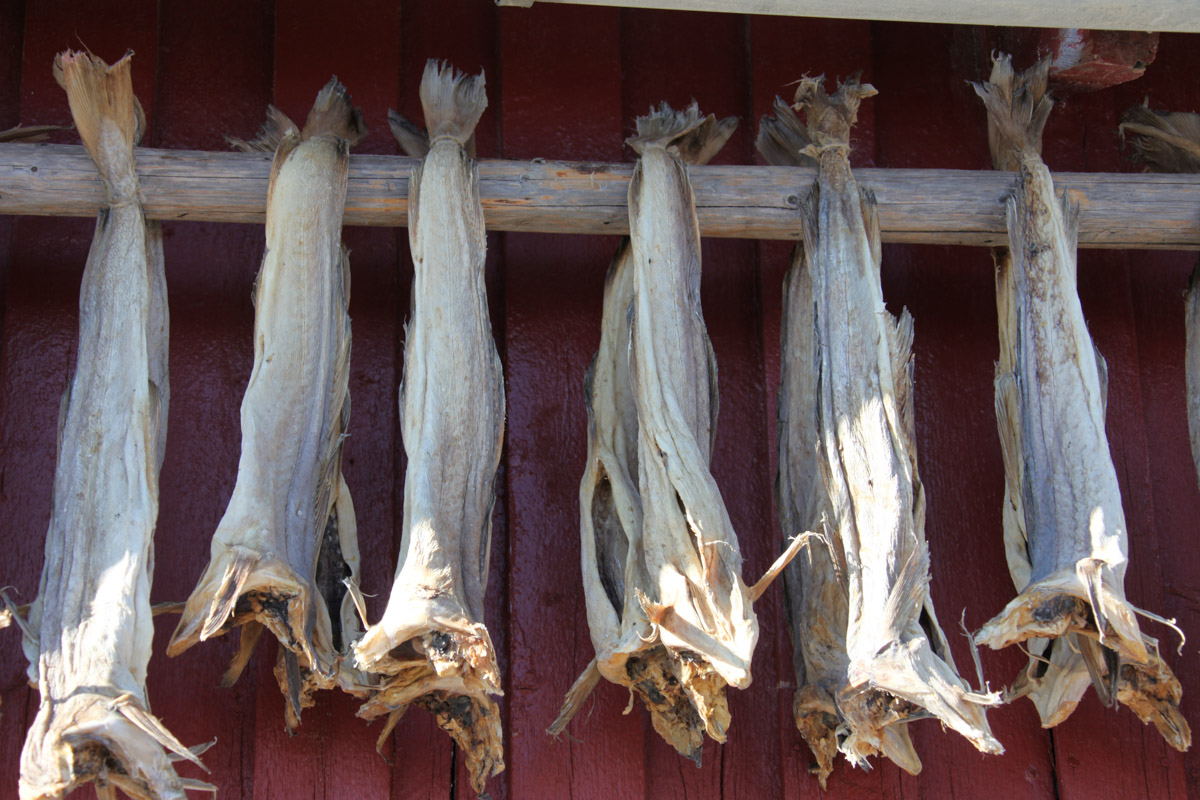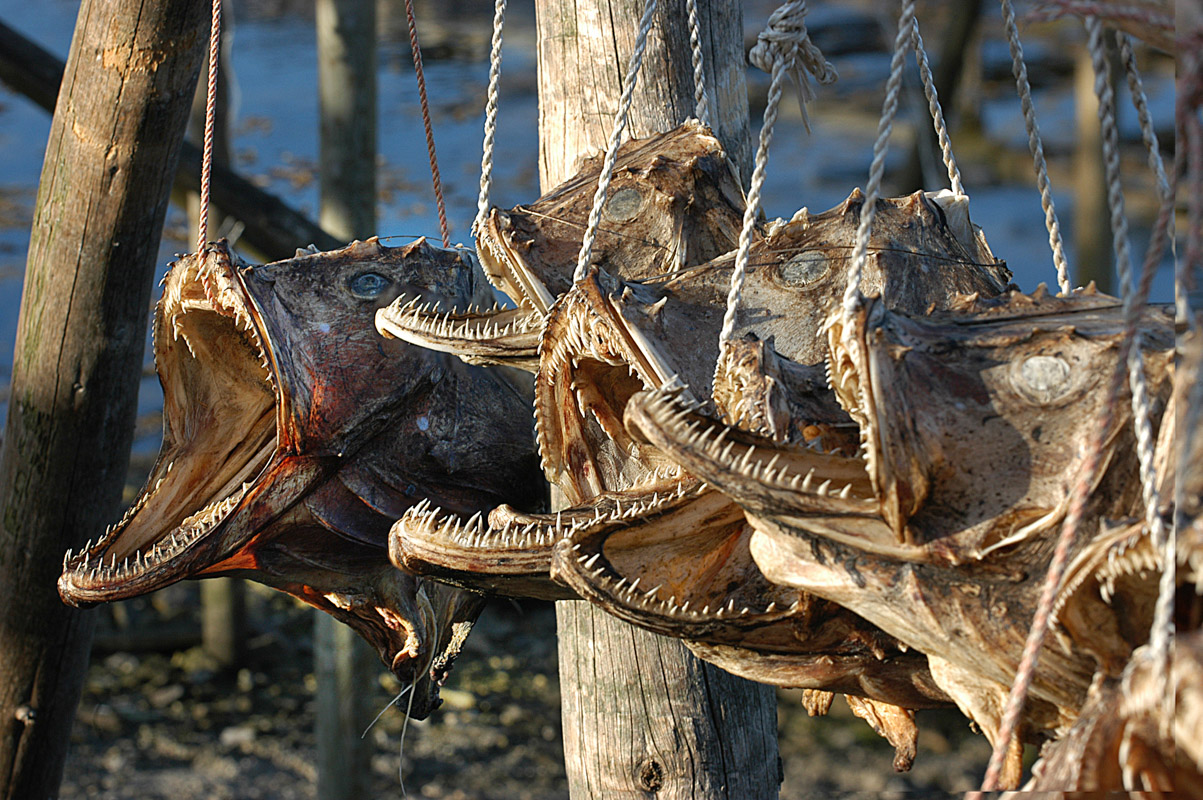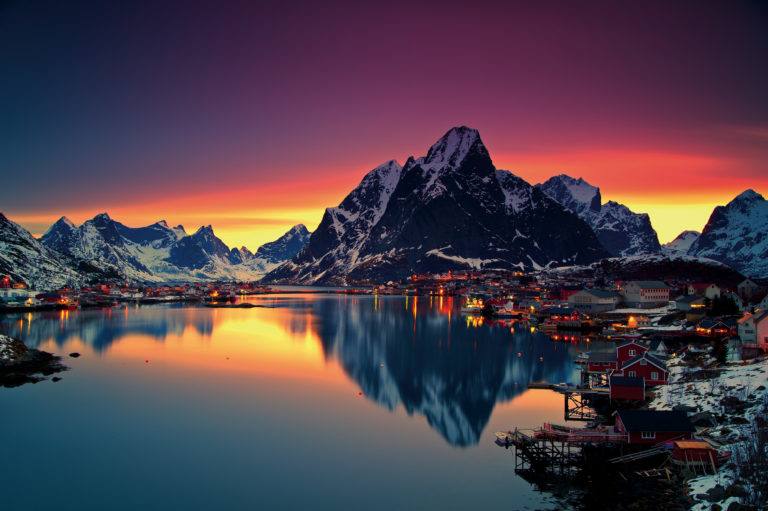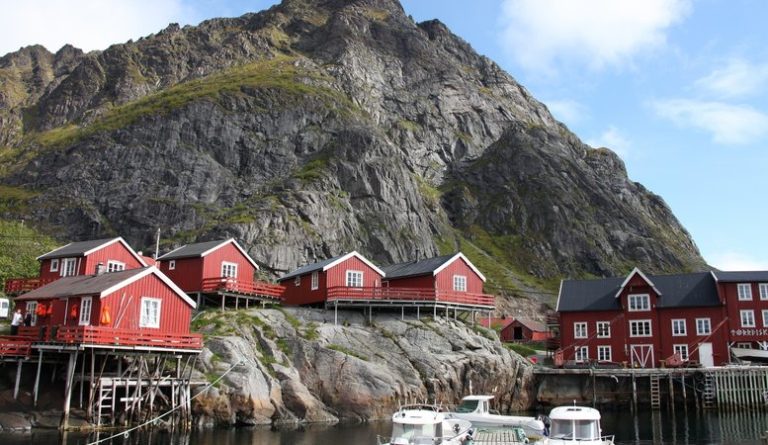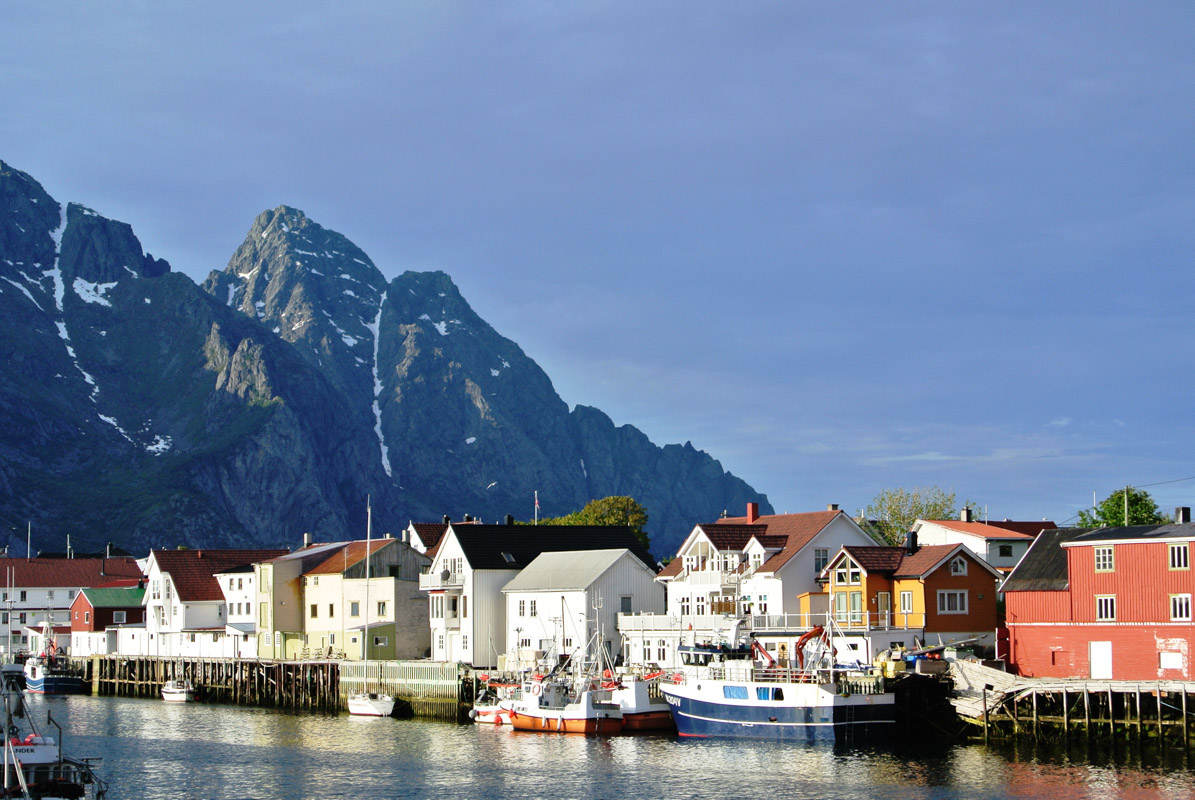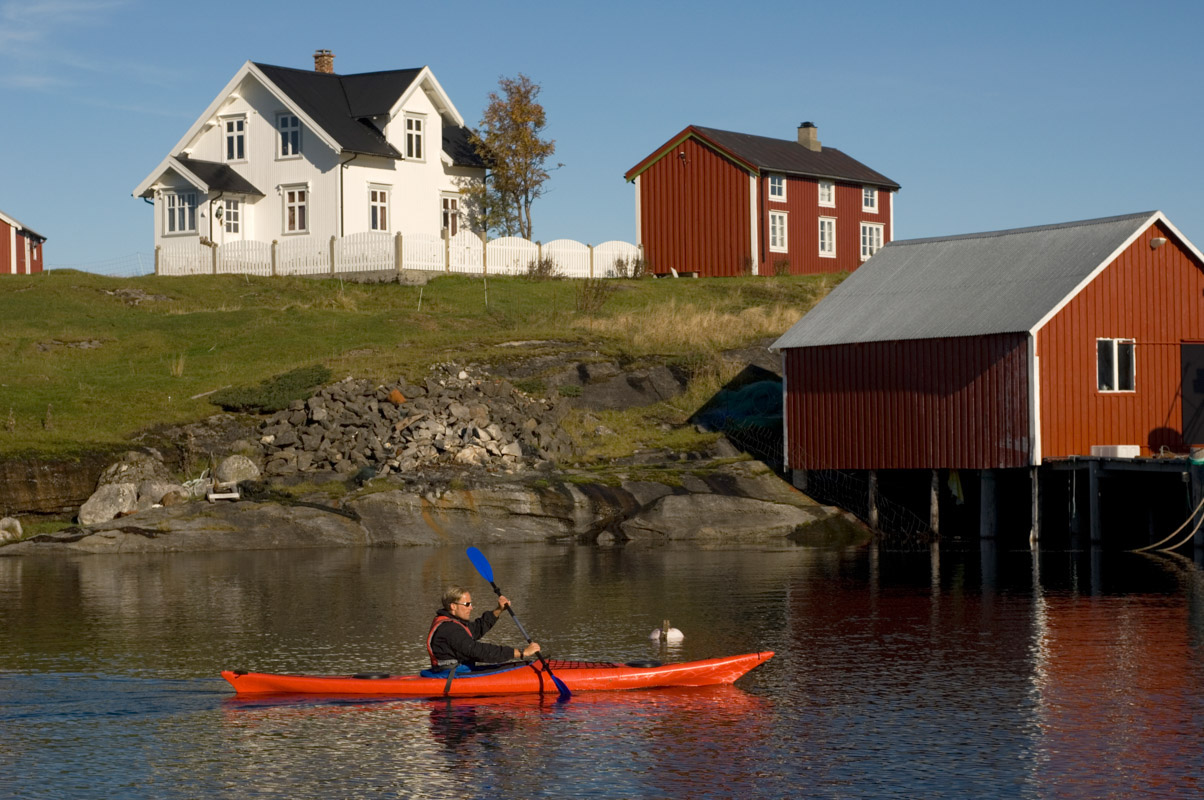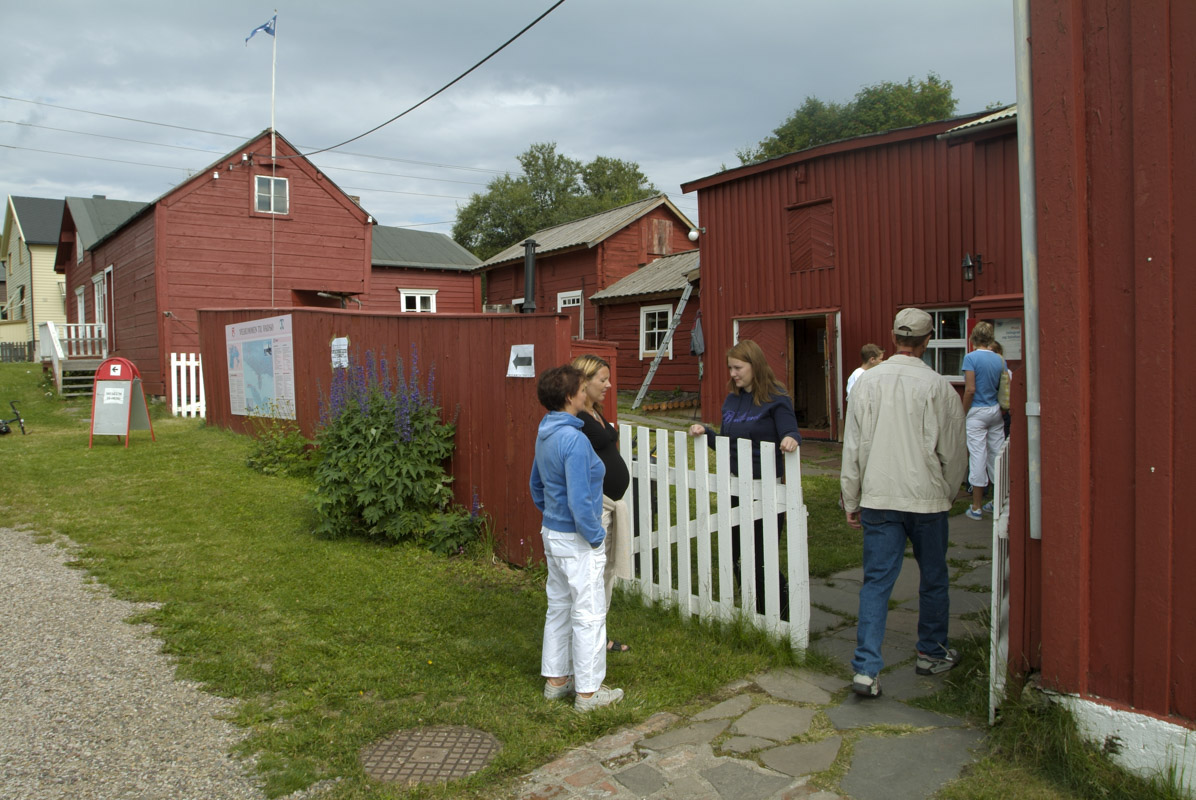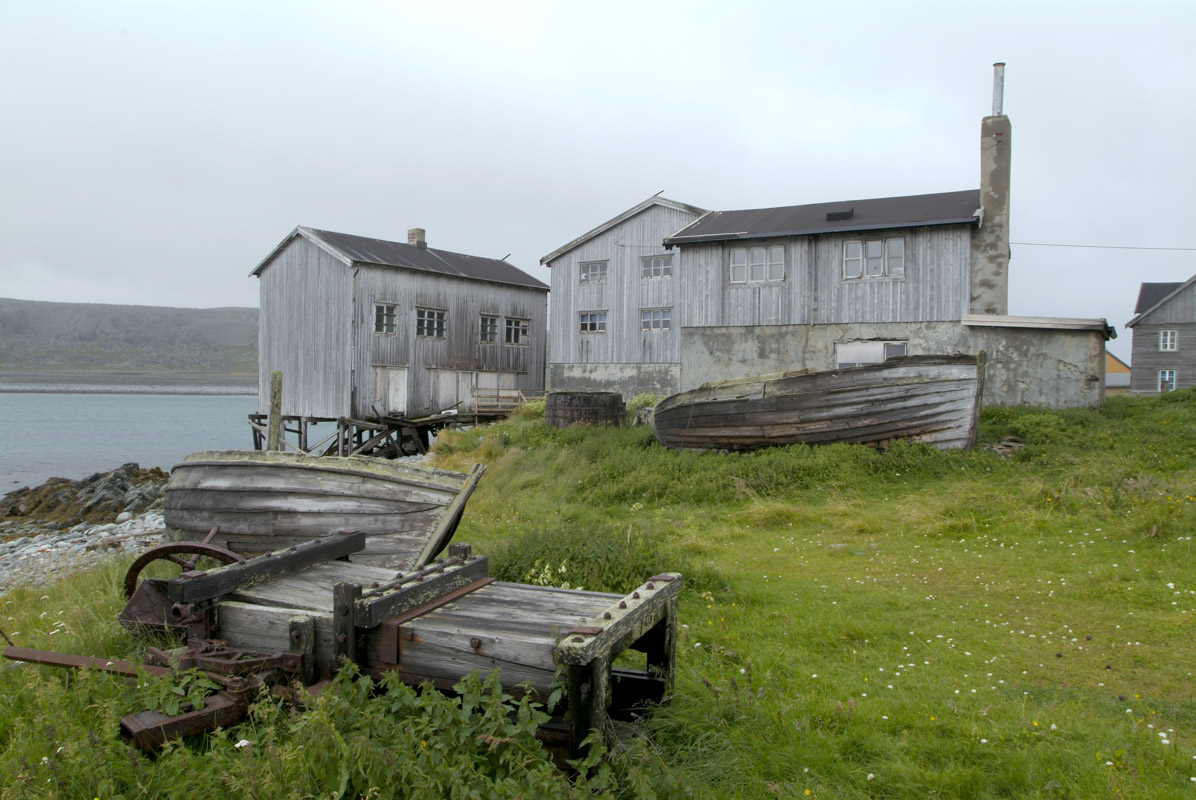The more rugged the coastline becomes in the north, the richer the marine life. A thousand years ago, the export of high-protein fish to middle and southern Europe began. Fish was the preferred food of Catholics there in times of fasting. This resulted in explosive growth along the Norwegian coast. Although the Reformation and competition from Newfoundland led to some decline between 1600-1800, the coast has not ceased to prosper since 1800. Today, fish is still the country’s most important export item after petroleum.
Seasonal fishing dominated the Northern Norwegian coastline in Springtime
For many thousands of years, the Arctic Norwegian cod has migrated from the Barents Sea, passing western Finnmark, Troms and Vesterålen on their way into the warm spawning grounds of Lofoten right after Christmas. These grounds are the site of the world’s most extensive cod fishing. In spring, the young cod follow the capelin on their way along the Finnmark coast and into the Finnmark fishing grounds. Fishermen from the entire coast used to come to take part in this seasonal fishing. The remainder of the year they fished in their local fishing grounds, often combining fishing with some small-scale farming.
Coastal culture in Northern Norway
Traditional coastal culture can be found throughout the north , and along the coast, you’ll never be far away from boat houses or fish storehouses. Todays road networks allow you to drive further inland . Therefore we advise to drive inland to find the local pearls along the way, or take a boat trip to the islands or go for a walk along the many hiking trails.
The area between Lyngen and the Russian Border with Norway was nearly totally burnt to the ground in autumn 1944. Only a minority of places in Eastern Finnmark retained the old coastal culture. However it is possible to see some of the original rebuilding attempts in the late 1940s along the Finnmark coastline.
The old boat houses are nowadays used as restaurants, hotels or museums. Some however are lived in by families that once used the houses in the fishing industry. Rorbuer are often turned into luxury hotel stay locations for tourists, while fishermen happily stay on their boat during the fishing season.
Todays fishing takes place on modern vessels and in contained sea ‘farms’. Strict hygiene rules in Norway mean people are not allowed in to see the fishing process once stocks are back on dry land. Only 20-30 years back it was common to see fish being unloaded in coastal communities, nowadays it’s almost an invisible industry.
Dried fish, salted fish, frozen fish and fresh fish are exported
Along the coast of Northern Norway, the weather is neither too cold nor too clement in wintertime. The fish can therefore be hung to dry on huge fish-drying racks or ‘hjeller’. This method has been used for several thousands of years. Today, most of the dried fish is exported to Italy, where it is called ‘stoccafisso’. From the 1600s onward, the fish was also salted before being dried on the rocks. This ‘klippfish’ (or ‘clipfish’ in English) is today sold to Portugal and Brasil (bacalhau), to Italy (baccalá) as well as to Spain, the Dominican Republic and Mexico (bacalao). Following the Second World War, the fish was frozen for export along the entire coast, whereas there is now a growing tendency to fly it out to be served fresh in the finest restaurants of Europe.
Skuld’ Torsken os feyle, hvad havde vi da
Petter Dass wrote in Nordlands Trumpet from the end of the 1600s
Cabins, store houses, fishing piers and boathouses are found throughout the coastline
Old woodwork acquires a metallic grey sheen after a century of sun, wind and stormy weather. Along the entire coast, there are old piers with wooden storehouses (or packing houses) that were built on stilts on the water to facilitate loading and unloading. The boats were winched up into the boathouses, and these are called ‘naust’ up north. During fishing trips, the fishermen often needed shelter, and this was provided by these boathouses. In Lofoten, they are known as ‘rorbuer’. Having been relentlessly lapped by the waves for an eternity, these old houses and piers are now being given a new life with a fresh lick of fish-oil based paint, and are being transformed into restaurants, shops and leisure centres.
The trading centres were the heart of the coastal economy
Someone had to buy and export all the fish, perhaps even give credit to the fisherman when the fish failed, and also ensure that flour and coffee were imported. Old trading posts thus lie at strategic points and at regular intervals along the coast. These piers, storehouses and boathouses are painted red, whilst there’s usually also a grand manor house painted a noble white or ocher. The fine interiors of these houses, with their plush sofas, silk wallpaper and crystal candelabras, have been preserved in many places, whilst the shop next door most likely sells rubber boots, zinc buckets and red and white striped peppermint candy.
Some villages are trapped in time
Time eventually caught up with the fishing stations, villages and communities. Either the waters were too shallow for modern fishing vessels, or people discovered that they no longer needed to live in such exposed locations once they had motorboats. In some places, only the foundations remain of these fishing outposts, but others have yet become hubs of activity during the summer months, when the coastal population travels south or out of the towns. Some of these fishing villages can now boast art galleries and souvenir shops, and are now as lively as they ever were.
Feather snatching provided an extra income
One source of income for the coastal community used to be eiderdown. The Eider duck (or Sea Duck) was almost considered a family member, and huts were constructed on surrounding islets. Whilst the Eider duck was nesting, it was possible to pluck out the down (Feathers). Many nests in one mating season could provide enough down for a duvet, and this became an important source of extra income for the coast’s women.
The Nordland boat was of great importance
A Nordland boat is easily recognisable by its high and straight stem. The Nordland boats come in many shapes and sizes. The smallest is the 15-foot ‘færingen’ which can be manned by one or two rowers; after that come the three -four seaters. The largest is the 48 foot ‘fembøring’, that takes five to six rowers and also has a sail. With the smaller færingen rowboats, it was possible to row to the local trade centre and to secure the daily catch in the fjord on the way home, whilst the larger vessels were used for fishing around Lofoten and Finnmark. In around 1900, motors started to appear on the boats, and subsequently, chugging boat motors and wheelhouses on the trawlers became a common sight in the fishing villages. As the fishing vessels of today are larger and made of steel, the wooden boats have become objects of interest for both enthusiasts and museums.
